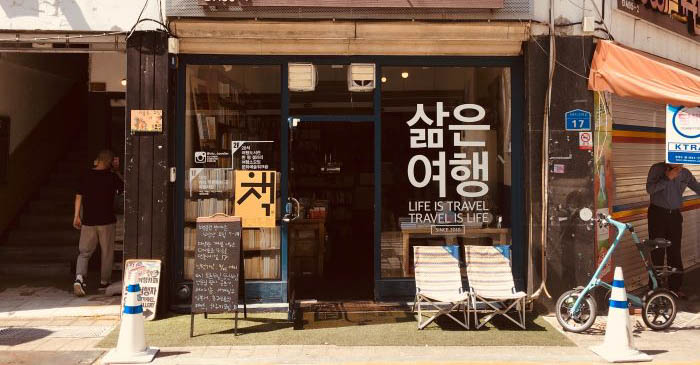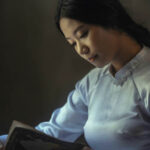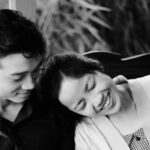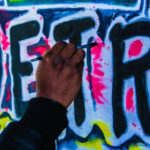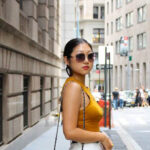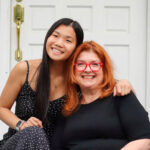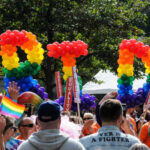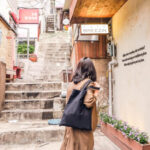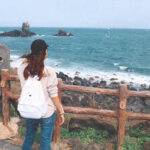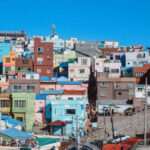So you’re not looking for another novel to read but some nonfiction to get you thinking. To scratch your itch, consider picking up one of these exciting books. Taking on creative writing to men’s beauty to queer Korean studies, the five works of nonfiction featured in this post can challenge your assumptions and offer you new ways of viewing the world around you.
Craft in the Real World by Matthew Salesses
In Craft in the Real World, Matthew Salesses critiques the ideological apparatuses influencing writing and publishing in America. In particular, he rethinks the unconscious assumptions and biases that inform the notions of craft and the writing workshop.
Craft for Salesses is a normative set of expectations delineated for writers by institutions and cultures in power. In the American context, this translates into internalized expectations that center cis, heterosexual, white, middle-class, able, male subjectivities and their attendant narrative forms while marginalizing others. According to Salesses, popular ideas about narrative concepts like character, plot, and agency emphasize literary concerns that feed into these hegemonic publishing trends.
Through historical and comparative literary lenses, Salesses critiques these inclinations and suggests ways of salvaging both craft and the writing workshop. He frames his discussion by tracking the development of the writing workshop from its Cold War origins and by pointing out that non-Western literary traditions do not conform to Western literary expectations.
To reorient American writing institutions, Salesses redefines concepts currently informing writerly craft. He also valorizes the entire process of writing—including revisions and edits—over the final products of writing, a move that inverts established conventions of workshop.
With a vision for American writing that is both inclusive and empowering, Craft in the Real World would be a great read for writers, artists, and others interested in the politics of the US publishing industry. It would also appeal to readers interested in the general labor of creative work.
Pretty Boys by David Yi
David Yi’s work Pretty Boys joyfully surveys the history of men’s beauty practices to construct a genealogy of personal empowerment. Alongside its historical research, Yi’s book offers beauty tips to help readers recreate iconic historical looks and freely express themselves.
Yi’s work unearths and pays homage to historical instances of makeup use by men and masculine-identified people. Ranging from Neanderthals through Louis XIV to BTS, Yi’s examples show how attitudes and practices regarding men’s beauty habits have changed in different historical, geographical, and social contexts.
As Yi argues, makeup use by men was and is not always associated with femininity and queerness. Contextualizing contemporary attitudes regarding masculine beauty, he tracks the gendering of makeup and beauty practices to Enlightenment and Victorian bifurcations of gender roles.
Yi acknowledges the deleterious psychological effects that the gendering of makeup, cosmetics, and beauty practices have had had on boys, men, and masculine-identified people. As such, he has said that in writing Pretty Boys, he wanted “to take those two words [‘pretty’ and ‘boy’] and flip them so that it’s something that’s empowering, if someone calls you a pretty boy I want people to know you can take that and define it on your own terms.”
With its historical work, Yi’s book challenges the gendered and sexualized associations of makeup and beauty practices. With its beauty tips and focus on personal empowerment, it also invites the reader to take their beauty into their own hands.
Queer Korea edited by Todd A. Henry
Queer Korea is a pathbreaking volume that bridges queer studies and Korean studies. Todd A. Henry, the editor, notes in the introduction that by bringing these two fields together, Queer Korea “[queers] a Korean studies that remains nationalistically heteronormative” and “contributes to critiques of queer studies that have focused on displacing Euro-American forms of non-normative sexuality and gender variance.” It thus unsettles both disciplines through their contact.
Contributors to the volume work with literary, historical, filmic, and ethnographic lenses, and their writings in Queer Korea are divided into two parts. Kyungtae Kim summarizes the two parts as follows:
The first part…consists of chapters chronologically covering the period from the Japanese colonial era to the dictatorial regime of president Park Chung-hee, and examining (in)visible queer subjects. The second part…introduces chapters dealing with queers who tried to cope with the double oppression of a heteronormative patriarchal family and homophobic neoliberal society.
In general, this amounts to a focus on historical and archival work in the first part and ethnographic work in the second.
Within this framework, the different studies contained in the volume span a wide range of concerns. In “Ritual Specialists in Colonial Drag,” Merose Hwang examines the practices and strategies of shamans living under Japanese colonialism. In “Avoiding T’ibu (Obvious Butchness),” Layoung Shin analyzes the economic, social and political conditions that have discouraged non-normative gender expressions among queer women. In “Mobile Numbers and Gender Transitions,” Ruin examines South Korea’s resident registration system, which scrutinizes and orders South Korean subjects and their bodies according to a binary concept of biological sex.
With an academic approach and tone, this is a book that’s perfecty positioned for readers interested in both queer studies and Korean studies from a scholarly perspective. For readers interested in either field individually, the collection brings together cutting-edge theory with innovative research to push both fields forward.
Q & A: Voices from Queer Asian North America edited by Martin F. Manalansan IV, Alice Y. Hom, and Kale Bantigue Fajardo
Since its publication in 1998, the collection Q & A: Queer in Asian America, edited by David L. Eng and Alice Y. Hom, has been a landmark source of art and scholarship for queer studies, Asian American studies, and queer of color critique. This newest Q & A, subtitled Voices from Queer Asian North America, is a follow-up to the classic first work.
2021’s Q & A is not merely a sequel to the 1998 collection. Addressing how this Q & A differs from the first collection, the editors’ introduction to the collection states:
First, it [Q & A (2021)] is a series of continuing meditations and conversations on enduring questions, issues, and struggles that have persisted and vexed Asian North American LGBTQ individuals, communities, and agendas.
…
Second, this volume is a space for opening new vistas, geographies, experiences, bodies, identities, and communities that have not, until this moment, been acknowledged if not made visible.
The new Q & A thus aims to further past conversations while introducing new topics of concern. Providing more than an inward-facing response to the last Q & A, the newest Q & A strives to be a timely engagement with the contemporary politics and issues facing LGBTQ Asian North Americans in its own right.
To accomplish this, the collection contains both academic and non-academic works to speak to a broad audience. Divided into seven parts, the collection very loosely groups together its contents by general themes like “Queer Unsettlings: Geographies, Sovereignties” or “Burning Down the House—Institutional Queerings.” As for how Q & A relates to Koreans, contributions by Patti Duncan, Anthony Yooshin Kim and Margaret Rhee, and Sung Won Park specifically deal with trans and queer Korean Americans.
“Q & A 2.0” offers a rich and multifaceted look at what selected trans and queer AAPI activists, scholars, and artists have been up to recently. Though many of the contributions are academic in approach, general readers should also find plenty to appreciate in the collection.
Minor Feelings by Cathy Park Hong
Since its publication last year, Cathy Park Hong’s essay collection Minor Feelings has made a huge impact. It’s been a New York Times bestseller, a Pulitzer Prize finalist in General Nonfiction, and a National Book Critics Circle Award winner for autobiography. On top of those accolades, Hong was recently featured on the cover of Time for its 100 Most Influential People issue.
As the title of Hong’s essay collection suggests, it’s organized around affective experiences that she terms “minor feelings.” Building upon Sianne Ngai’s theoretical work on “ugly feelings,” Hong defines minor feelings as:
the racialized range of emotions that are negative, dysphoric, and therefore untelegenic, built from the sediments of everyday racial experience and the irritant of having one’s perception of reality constantly questioned or dismissed. Minor feelings arise, for instance, upon hearing a slight, knowing its racial, and being told, Oh, that’s all in your head. … Such disfiguring of senses engenders the minor feelings of paranoia, shame, irritation, and melancholy.
Through this definition, Hong makes visible the feelings that are experienced by people of color yet silenced and erased by the dominant white, patriarchal culture. As she tackles the question of Asian American identity throughout the collection, she frames these minor feelings as constituent factors of Asian American racialization.
The collection’s arguments do not coalesce into a single thread of thought but track various themes across a wide selection of contexts. Hong’s essays touch upon art, gender, race, and politics, and she substantiates her discussions and arguments with personal anecdotes as well as cultural criticism. The piercing thought and relatable vulnerability that characterize Hong’s essays make for compelling reads on often uncomfortable topics.
If you haven’t gotten to it yet, now is still a great time to pick up Hong’s essay collection. Oh, and even if minor feelings are untelegenic according to Hong, Greta Lee is adapting Minor Feelings into a TV series.
